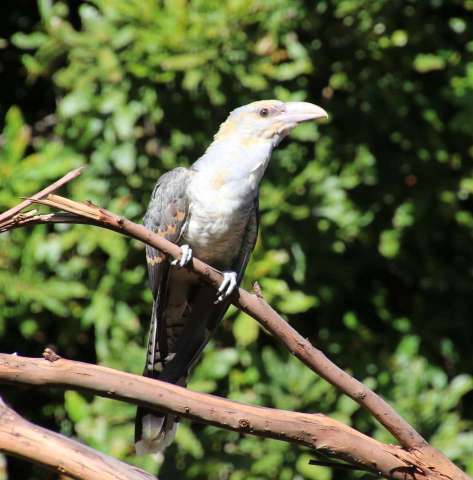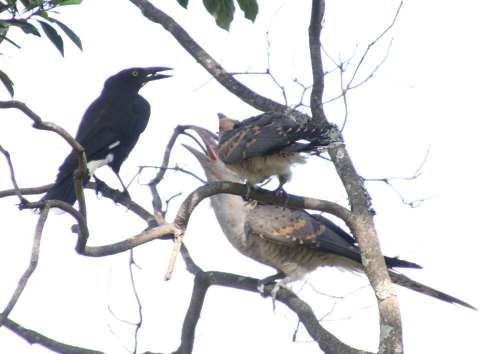It is spring and the Cove is again full of the sound of birds. Some visitors to the Cove every spring come from a long distance. We get two migratory cuckoos, the Channel Billed Cuckoo and the eastern Koel. The following information about these cuckoos was copied from the Aussie Birdlife Website- https://birdlife.org.au
Eastern Koel
If you live in some parts of northern or eastern Australia, one of the characteristic birds of spring is undoubtedly the Eastern (or Common) Koel. Its monotonous and feverish cry of cooee, cooee, cooee ringing through the evening air (and much of the night) is a sure sign that spring has arrived.
Usually arriving along the east coast between August and November, the Eastern Koel is a large migratory cuckoo which flies to Australia from New Guinea, Indonesia and possibly as far away as the Philippines. It breeds at widespread sites in Australia’s north and east, mostly in Queensland and New South Wales, at least as far south as Sydney, where they are often seen in the suburbs. They now occur around Canberra every year, and a few head even farther south, being recorded as far afield as Melbourne, the Murray River and even Adelaide, with the number of records in these southern climes continuing to increase every year. They remain in Australia until March or April, when they fly north once more, returning to their non-breeding grounds.
Often foraging while concealed among the dense foliage of fig trees, Koels gorge themselves on fruit. When seen in the treetops, male Koels appear black, but in closer views are actually a glossy blue-black. The females are quite different, with brown-and-fawn plumage, with various patterns of spots and barring. This affords them some degree of camouflage while they skulk about looking for nests to lay their eggs in.
Being a cuckoo, Koels lay their eggs in the nests of other species of birds, especially Magpie-larks, Figbirds and large honeyeaters, such as friarbirds and wattlebirds. The female lays just one egg in the nest, which is then incubated by the hapless hosts.
The next time you hear a Koel calling non-stop through the night, rather than cursing it, simply appreciate it as one of the sounds of spring.
If you’d like to find out where you’re likely to hear the nocturnal calls of the Eastern Koel, check out BirdLife Australia’s Birdata website.
Channel-billed Cuckoo
Scythrops novaehollandiae
Cuculidae
Of the dozen or so species of cuckoos that occur in Australia, the Channel-billed Cuckoo is the largest. Being a cuckoo, it lays its eggs in the nest of another bird, and being a large cuckoo, it must lay its eggs in the nest of another large bird. The species usually chosen as foster parents are Pied Currawongs, Australian Magpies, crows and ravens, although occasionally eggs are laid in the mud-nests of White-winged Choughs or Magpie-larks, and very occasionally in the nests of birds of prey.
Description
Apart from the Channel-billed Cuckoo's large size, its massive pale, down-curved bill, grey plumage (darker on the back and wings) and long barred tail make it difficult to confuse it with any other bird. In flight the long tail and long wings give the bird a crucifix-shaped (cross-shaped) silhouette. Young Channel-billed Cuckoos have more mottled buff, brown and grey plumage. Although they are not nocturnal birds (night birds) in the strict sense, Channel-billed Cuckoos are notorious for calling all night long during the breeding season. This species is sometimes known as the Storm-bird or Stormbird.




